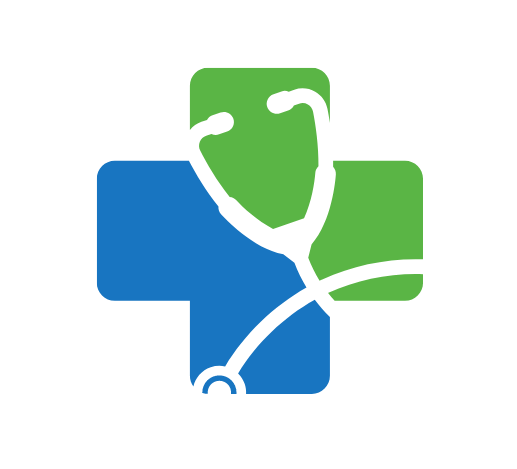
Learning to interpret an ECG properly isn’t about memorizing waves—it’s about seeing what the heart is truly telling you.
Understanding the ECG starts with knowing what’s normal
Before diving into arrhythmias or ischemia, it’s essential to recognize a normal ECG pattern. Without that foundation, everything seems abnormal. A standard ECG reading includes the P wave, QRS complex, and T wave, all occurring within a predictable rhythm. Most clinicians start by checking the heart rate and rhythm. Is it regular? Is each P wave followed by a QRS? In normal sinus rhythm, that pattern is steady and coordinated. This rhythm reflects the sinus node firing from the right atrium and orchestrating the heart’s contractions with precise timing.
Reading an ECG like a professional means internalizing this baseline. Once that structure is clear, every deviation starts to stand out as either benign or dangerous.
Rate and rhythm are the first clues—always start there
The heart rate gives the first piece of the puzzle. We typically calculate it by counting the large squares between QRS complexes. In a regular rhythm, this offers a fast estimate: 300 divided by the number of large boxes between beats. Professionals quickly scan lead II or V1, where P waves are easiest to observe. Then comes rhythm assessment. Is it regular or irregular? Is the QRS wide or narrow?
In tachycardia, narrow QRS suggests supraventricular origin, while wide QRS often points to ventricular rhythms. Recognizing patterns like atrial fibrillation or flutter starts with these rhythm evaluations. This is where subtle experience and repetition make the biggest difference.
Axis deviation reveals deeper anatomical shifts
Electrical axis refers to the overall direction of the heart’s depolarization, typically assessed via leads I and aVF. If QRS complexes are upright in both, the axis is normal. But if one is negative, it might indicate a deviation—left or right. Left axis deviation may hint at left anterior fascicular block, whereas right axis could suggest right ventricular hypertrophy.
Seasoned physicians use axis checks to correlate clinical suspicion with structural cardiac changes. This step isn’t flashy, but it refines diagnosis and sharpens accuracy, especially in cardiomyopathy or pulmonary disease.
Intervals help time what’s going wrong
Look at the PR, QRS, and QT intervals. A short PR may suggest pre-excitation, as in Wolff-Parkinson-White syndrome. A long PR suggests AV nodal delay. The QRS should be under 120 milliseconds. Longer durations may indicate bundle branch blocks. A prolonged QT interval can mean electrolyte disturbances or drug toxicity. Short QT might point to congenital conditions.
Professionals always measure these with calipers or precise screen tools because millimeters matter. Slight prolongations often reveal systemic problems like hypokalemia or early digoxin effect. This level of scrutiny separates routine reading from expert interpretation.
ST segments are subtle but life-saving indicators
Ischemia doesn’t scream—it whispers through ST segment shifts. Elevation in contiguous leads points toward myocardial infarction. Depression may suggest reciprocal changes or subendocardial ischemia. Professionals check for shape: concave, convex, flat. They also compare it to the baseline PR or TP segment for accuracy.
The trick is knowing what’s meaningful. Early repolarization in athletes may mimic pathology, and pericarditis can resemble infarction. Experience helps, but the golden rule is to correlate ECG with the clinical picture. No tracing exists in a vacuum.
T wave abnormalities can signal repolarization issues
T waves represent ventricular repolarization. Tall, peaked T waves may indicate hyperkalemia. Flattened or inverted T waves can appear in ischemia, bundle branch blocks, or CNS events. Professionals read T wave changes with caution—they don’t always pinpoint a diagnosis but often add weight to one.
For example, a flipped T wave in lead III alone might be normal. But if it appears across multiple anterior leads, it could suggest anterior ischemia. T waves are like tone in conversation—they shape meaning beyond the surface.
Knowing lead placement improves spatial interpretation
Each ECG lead views the heart from a specific anatomical angle. Inferior leads (II, III, aVF) see the bottom. Lateral leads (I, aVL, V5, V6) see the left side. Anterior leads (V1–V4) capture the front wall. This topographic map allows ECG to localize injury. For example, ST elevation in V1–V3 suggests anterior infarction, which carries high mortality if not promptly treated.
A trained eye uses lead patterns like a geographic map. When one area lights up, it often correlates with a specific coronary artery. Reading an ECG this way turns each segment into a story about blood flow and tissue survival.
Bundle branch blocks alter everything—so read them carefully
A left bundle branch block (LBBB) widens the QRS and alters repolarization so dramatically that interpreting ST segments becomes nearly impossible. That’s why new LBBB with chest pain is treated seriously—it might mask an infarct. Right bundle branch block (RBBB) shows RSR’ patterns in V1 and V2.
Recognizing these blocks requires pattern memory. Professionals don’t just see the width; they analyze morphology. A wide QRS with slurred S waves in lateral leads? Think LBBB. These patterns signal conduction delays that may require deeper cardiac workup.
U waves and subtle findings matter more than you think
Rarely discussed but clinically relevant, U waves appear after T waves, especially in bradycardia or hypokalemia. They’re subtle but may hint at serious electrolyte imbalances. A professional doesn’t chase these findings blindly—but includes them when the context fits.
Other small clues—like notched P waves in lead II or absent R wave progression—build a fuller picture. This attention to detail is what defines expert reading.
Practice transforms theory into pattern recognition
No professional becomes fluent in ECG overnight. It requires repeated exposure, clinical correlation, and structured self-review. Studying real patient tracings, quizzing yourself on unknowns, and reviewing with mentors builds lasting competence. Over time, what seemed like chaotic lines becomes a precise language of cardiac function.
This guide was prepared by www.turkishdoctor.ae editöründen to offer a human-written, practice-driven resource for reading ECGs like a true professional. Mastery begins by learning where to look—and never rushing past the small details.

 then "Add to Home Screen"
then "Add to Home Screen"